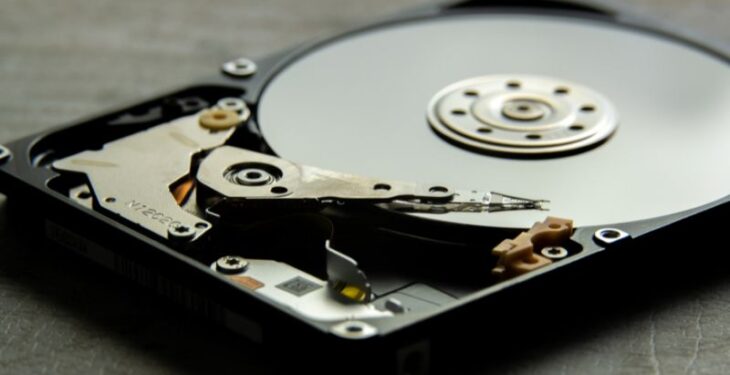Generally, a solid-state drive (SSD) is a semiconductor-based storage device that utilizes NAND flash memory to save persistent data. SSDs use an array of blocks also known as grids with an array of memory cells also referred to as sectors.
Compared to hard drives, SSDs are considered lighter in weight. Besides, they use less power and have no vibration since they have no moving parts. Also, they are much better cautioned against accidental drops than HDDs.
SSDs have a better chance to speed up your everyday tasks by up to six times. This is because they use flash memory instead of the moving parts in the HDDs. This makes it much easier for the computer to find files faster.
Can Data Be Recovered from SSD?
The answer to this question is definitely yes. Although some online guides may want you to believe that SSD recovery is impossible, SSD data recovery is very possible. However, while you try to recover deleted files from SSD, you need to understand that the success rate of recovering your data will depend on whether you have enabled the TRIM command is enabled on your computer or not.
Enabling the TRIM command allows your computer’s operating system to communicate to the s the information that unused data can be wiped internally. This helps to speed up write operations and increase SSDs performance.
It is however the responsibility of the operating system to send TRIM commands. As a result, trimming will often not happen after a power failure, file system corruption, software error, or similar problems that are likely to cause data loss. But you have the opportunity to increase the chances of SSD data recovery. Read on to find out how.
How to Increase Chances of Successful SSD Recovery
Here are some of the tips you can use to increase the chances of recovering SSD data from your computer.
-
Disconnect the SSD
We recommend that you disconnect the SSD from which you have lost data and intend to attempt recovery from. This should be done immediately if you notice there is missing data. Once you get it out, connect it to a different computer and perform the recovery there. If you do not have access to another computer at the time, shut your computer and wait until you are ready to do this.
-
Use the best available data recovery software
The success of SSD data recovery is a time-bound event and should not be based on many trials. Since you have limited chances to try this, we recommend you use the best SSD data recovery software available in the market. Do not hesitate to spend an extra coin if you must since you may just be about to lose data that you can never reproduce such as those memorable photos or videos of memorable moments.
-
Install data recovery software on a different drive
In an attempt to use the best data recovery software, many people may want to install the software in the same SSD where they have lost data. Do not fall into this trap. We recommend you install the SSD data recovery software on a different computer to avoid overwriting the files.
Similarly, we recommend that you should always have at least one recovery software pre-installed on your drive just in case you lose data. This will also save you time as you will only need to launch the software at the time of data loss. One of the most powerful SSD data recovery software you can install to your device for free is Disk Drill by Cleverfiles.
How to Recover SSD Data
There are many ways to recover files from SSD. We will show you how to recover SSD data with software. In this case, we will show you how to use Disk Drill by CLeverfiles.
Recover SSD Data on a Windows PC with Disk Drill
SSD data recovery software is one of the best and easiest ways to recover SSD data on a Windows PC. Disk Drill is a reliable SSD file recovery tool everyone should be using today. If you do not have recovery software preinstalled, we recommend you take advantage of the Disk Drill Data SSD Data Recovery software.
The software from Cleverfiles is one of the top performers in the market today and is liked by many as it supports virtually all file formats and has unique scanning algorithms that support quick and deep scans to ensure you are getting back all your data.
Proceed with the following steps to complete this action with Disk Drill.
Step 1: Install Disk Drill
Assuming you do not have the software installed on your PC before, go to the official website of Disk Drill and download the software from there.
The Windows version can be used to recover a maximum of 500 MB of data for free. You can however use it to recover unlimited data if you upgrade to Disk Drill Pro. S
Step 2: Select the SSD and Search for Lost Data
Once you launch Disk Drill, it will list all the available storage devices. This makes it much easier to select SSD or any other drive to be scanned for lost files. Click the “Search for lost data” button to begin the recovery process. Disk Drill applies all the recovery algorithms in its searching process to unearth all recoverable files.
Step 3: Preview Recoverable Files
Once the search process ends, Disk Drill makes available all the recoverable data in a preview format. It is therefore a sign you are just about to get back your files since you will only be able to preview files that are recoverable to Disk Drill.
Step 4: Select the files for recovery
You may not be interested in recovering all the files on the preview. At this stage, select only the SSD data you intend to recover by simply clicking the checkbox next to every file. You can also narrow down the number of files to preview or recover by using the results filters on the left.
Step 5: Tap the Recover button
Clicking the “Recover” button gives the software a command to recover the selected files. Be careful as Disk Drill will ask you to specify where you want to store the recovered files. At this time, make sure you pick a folder different from the one where you had originally stored the files before they were lost.






